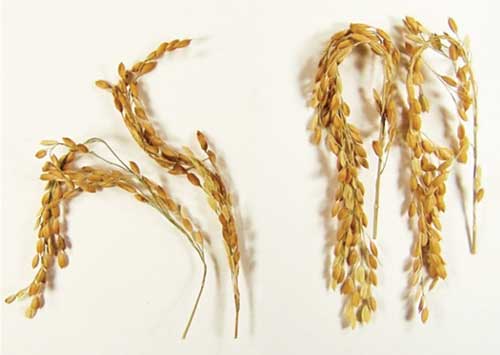Low-methane rice; Super-chilling extends shelf life; USDA report on new food technologies
CUTTING EDGE TECHNOLOGY
 Scientists develop low-methane rice
Scientists develop low-methane rice
Rice serves as the staple food for more than half of the world’s population, but it also contributes up to 17% of global methane emissions, a potent greenhouse gas that is more than 20 times more effective at trapping heat than carbon dioxide. But that may be changing thanks to researchers from the United States, Sweden and China. By inserting a gene from barley into a common rice plant, scientists have created rice plants that emit virtually no methane during cultivation in paddies. In addition, the new rice strain—dubbed SUSIBA2—produces substantially more and larger grains for a richer food source.
In early work in Sweden, researchers investigated how distribution of sugars in plants could be controlled by a special protein called a transcription factor, which binds to certain genes and turns them on or off. To narrow down the mass of gene contenders, the team started with grains of barley that were high in starch, then identified genes within that were highly active. The activity of each gene then was analyzed in an attempt to find the specific transcription factor responsible for regulating the conversion of sugar to starch in the above-ground portions of the plant, primarily the grains.
Upon discovery of the transcription factor SUSIBA2, which stands for SUgar SIgnaling in BArley 2, further investigation revealed it was a type known as a master regulator. Master regulators control several genes and processes in metabolic or regulatory pathways. As such, SUSIBA2 had the ability to direct the majority of carbon to the grains and leaves, and essentially cut off the supply to the roots and soil where certain microbes consume and convert it to methane.
Researchers introduced SUSIBA2 into a common variety of rice and tested its performance against a non-modified version of the same strain. Over three years of field studies in China, researchers consistently demonstrated that SUSIBA2 delivered increased crop yields and a near elimination of methane emissions.
Super-chilling extends product shelf life
Research by Campden BRI, Gloucestershire, UK, has shown that super-chilling can safely extend the shelf life of chilled foods without any loss of sensory quality. Super-chilling reduces the temperature of food products to around -2°C so they become partially frozen. Chilled products are stored at that temperature until being released into the cold chain.
Experiments on cook-chill prawns revealed that super-chilling can increase product shelf life up to 22 days—a 120% increase over the typical 10-day shelf life. The researchers also looked at the effects of super-chilling on poultry and gammon.
“Super-chilling is not a novel technique,” said microbiologist Greg Jones with Campden BRI. “It is used on an ad hoc basis to build stock in times of high demand such as Christmas or a ‘barbecue’ weekend. Up until now there has been little data to support its use more widely and little information on the impact of its wider use on product safety. Our research shows that it can be used to extend shelf life without compromising the quality or safety of these products.”
In addition to shelf life, the research has demonstrated that super-chilling can reduce energy use and waste. Campden BRI calculated the energy required to produce and distribute both super-chilled and conventionally chilled farmed salmon. Although super-chilling the fish requires more energy during manufacture, more fish can be packed into each container because super-chilling negates the need for ice during transportation. The extra energy used to super-chill rather than chill was equaled in fuel savings by the time the fish had been transported the 477 km from Stornoway to Glasgow.
USDA report showcases new food technologies
The U.S. Dept. of Agriculture (USDA) recently released its Annual Report on Technology Transfer FY2014, which highlighted discoveries by USDA researchers that show potential for commercial application and economic growth. In the areas of food and nutrition, these include procedures to remove up to 98% of allergens from peanuts, an egg-pasteurization process using radio-frequency energy that is 1.5 times faster than current practices, and a portable method for identifying harmful bacteria in food that could improve the response to outbreaks of foodborne illnesses.
Other notable breakthroughs include the development of self-drying raisins, extending frying oil shelf life by adding antioxidants, and identifying genetic variation in rainbow trout that could produce higher levels of omega-3s.In addition, researchers established that the use of antibiotics in cattle feedlots does not lead to increases in antibiotic-resistant E. coli.
A copy of the report is available online at https://www.ars.usda.gov/sp2UserFiles/Place/01090000/FY14_%20Ann_TT_%20Rpt.pdf.
If you are working on or know of some cutting edge technology that you would like to be featured in this column, please send an email to [email protected].